Marvellous Monday!


Caribou contest
The next Caribou contest will be taking place Wednesday, February 26th, 2020. Students are to arrive at 7:15 am for a 7:30 am start. They should bring their own charged devices.
The interactive question for Grades 2-10 will be Bomb Defuser and for Grade 11/12 it will be GeomeTree requiring a construction involving lines and circles. Because Caribou’s GeomeTree site can be used to solve the interactive question, this site will be blocked at noon on Tuesday, February 25th. Both interactive questions are accessible from Caribou’s Games/History page.
Contact Caribou directly if you have any problems with the games.
There will be no history question in the February contest.
The interactive question for Grades 2-10 will be Bomb Defuser and for Grade 11/12 it will be GeomeTree requiring a construction involving lines and circles. Because Caribou’s GeomeTree site can be used to solve the interactive question, this site will be blocked at noon on Tuesday, February 25th. Both interactive questions are accessible from Caribou’s Games/History page.
Contact Caribou directly if you have any problems with the games.
There will be no history question in the February contest.
We began the day having Music with Mr. Oliver.
Next, we did a fun cooperation and teamwork activity!
Throughout the year we will continuously be working as a class and in groups (ex: Exhibition) so we did an activity that showed us the importance of cooperation in Grade 6 and working as a team.
Students were put into groups and began by standing in a circle, holding hands. Ms. Jaskolka dropped one balloon into the circle of each group. The goal was for students to see how many times they can tap the balloon into the air keeping it up in the air, without losing connection (all student needed to continue holding hands). In order for this to work effectively, students needed to work cooperatively, each of them making sure they are not letting go of their neighbour’s hands.
Students soon figured out that they must all move together, as a circle, so to make sure they do not lose connection. If the balloon fell to the ground we needed to begin again. Once we were able to keep one balloon up in the air, Ms. Jaskolka challenged us with 2 balloons!! It was not easy and we needed to cooperate well with our group to keep both balloons up in the air! When we were finished we talked about the strategies we used to keep the balloons in the air: working together with our team, listening to group members, assigning roles, moving together as a group, problem-solving and decision making. We talked about how all the strategies we used during this activity are important in Grade 6 and everyday life! We always need to ensure to be kind and respectful with anyone that we work with and we need to learn how to work together as a team with all sorts of different personalities. We also need to practice decision making and compromising when ideas differ.
Then we moved onto talking about the expectations in Grade 6, the skills needed to be successful and what we need to work in order to be better prepared for Grade 6. We discussed how Grade 6 is an important year as it is the culminating year of the PYP program and when we work on the Exhibition. We watched a video to better understand the expectations related to Exhibition.


What is the PYP Exhibition?
-Culmination of PYP
-A rite of passage from the PYP to the MYP
-A celebration of learning
-A demonstration of what it means to be a PYP student, applying what they have learned and who they have become throughout their journey in the PYP (essential elements)
-Individual and group inquiry
-Student centered
-A rite of passage from the PYP to the MYP
-A celebration of learning
-A demonstration of what it means to be a PYP student, applying what they have learned and who they have become throughout their journey in the PYP (essential elements)
-Individual and group inquiry
-Student centered
What does the PYP Exhibition look like?
Goal: Following official PYP guidelines students will stage an exhibition demonstrating their understanding of the PYP.
Role: Each student will contribute to the exhibition and make a presentation.Audience: All members of the school community and parents
Situation: Students decide what action to take to solve an identifiable local problem that also related to the bigger world.
Product or performance: PYP Exhibition (the opportunity for students to share their message with the community and world!)
Enduring Understanding: Have the children made a difference in the community and/or world and shown an understanding of the PYP essential elements?
Next, we were given a math challenge! We were asked to build a decagonal prism using the materials supplied (modeling clay and toothpicks). Students problem solved that deca means 10 and used this knowledge to build their prism and to understand how many toothpicks to use (edges) and how many pieces of clay (vertices). Students then described their 3-D structure by recording the number of faces, edges and vertices.
After first recess and lunch we had French with Mdm. Stella.
Next, we learned about electricity by making a simple circuit. Our challenge was to have the light bulb light up. Once this was done, we added a second bulb and noted how this affected the brightness of the bulbs. We learned that both circuits are called series circuits:
Electricity flows from the power source, in a loop or a circuit, back to the power source. This means that the electricity must start and finish at the same power source. If the circuit is not complete (i.e. if the loop is not closed) then electricity cannot flow through it properly.
In the in series circuit the components are joined together in one bigger circuit i.e. one continuous loop. Electricity passes first through one component first then the next one. A disadvantage of the series circuit is that when one component malfunctions, the other components will stop working.
We were then challenged to build a parallel circuit!
Parallel circuit:make two SMALLER circuits with each bulb having it’s OWN circuit parallel to one other. A major advantage of parallel circuits is that if one component malfunctions, the other continues to function.
Series circuit versus parallel circuit:
At the end of the day we worked on a language art lesson. Students drew monsters, wrote a detailed paragraph describing their monster, and then had someone else attempt to draw an exact replica of their monster following only the details in the paragraph. We then tried matching the monsters and noted which ones were better matches. We realized that it is important to add as much detail as possible and use describing words so that someone is able to replicate our drawings accurately. Students are asked to reflect on how they could have improved their paragraph for a better monster match.
See you all in Grade 6!!
Homework:
1. Read Daily
2. Math Pg. 264-265 #1-5
Challenge: Pg. 265 #7 - Due tomorrow
3. Finish storyboard - Due tomorrow
4. Algeria, Norway, Sri Lanka, Mali and Iran to map
5. Bring devices tomorrow - Students are asked to bring a device that has video editing software (ex: IMOVIE) because students will be making a persuasive advertisement video tomorrow with their partner, convincing people to come to their province.




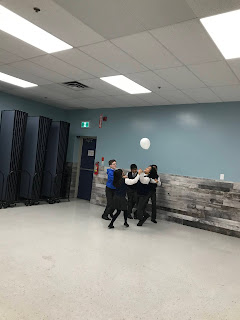


























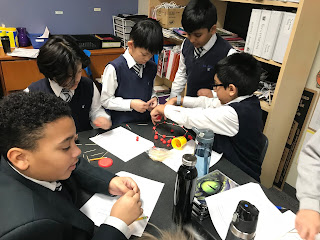





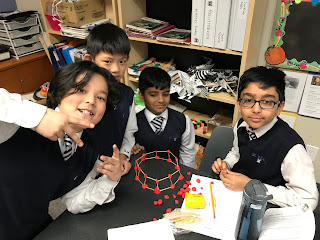

















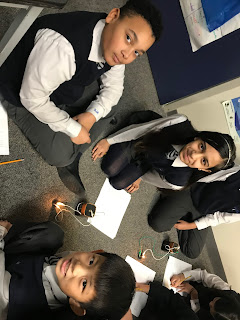



















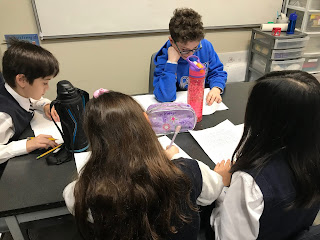




No comments:
Post a Comment